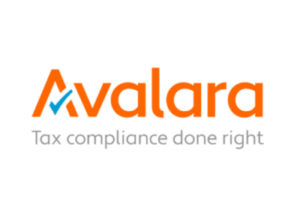SAP POS
Filter By
Browse By
- SAP Analytics and AI
- SAP Application Development and Integration
- All SAP Application Development and Integration
- SAP ABAP
- SAP ABAP Development Tools
- SAP ABAP Test Cockpit
- SAP API Management
- SAP BAPI
- SAP Basis
- SAP BRF
- SAP Business Application Studio
- SAP CMS
- SAP Design Studio
- SAP Development Tools
- SAP DevOps
- SAP EAI
- SAP EDI
- SAP Extension Suite
- SAP Fiori
- SAP Fiori Elements
- SAP Integration Suite
- SAP Low Code Application Development
- SAP Low Code Automation
- SAP Netweaver
- SAP Release Management
- SAP UI5
- SAP Web Application Server
- SAP Web IDE
- SAP Business Process Management
- SAP Center of Excellence
- SAP CIO
- SAP Customer Experience
- SAP Data and Data Management
- All SAP Data and Data Management
- SAP BW
- SAP BW/4HANA
- SAP Crystal Reports
- SAP Data Archiving
- SAP Data Center
- SAP Data Governance
- SAP Data Integration
- SAP Data Migration
- SAP Data Quality
- SAP Data Services
- SAP Data Strategy
- SAP Data Visualization
- SAP Data Warehouse Cloud
- SAP DMS
- SAP Document Control
- SAP EIM
- SAP ETL
- SAP ETL Tools
- SAP HANA
- SAP HANA Administration
- SAP HANA Deployment Infrastructure
- SAP HANA Studio
- SAP Master Data
- SAP Master Data Governance
- SAP MDM
- SAP Enterprise Architect
- SAP Enterprise Asset Management
- SAP ERP
- SAP Finance
- All SAP Finance
- SAP Accounting
- SAP AR AP
- SAP Asset Accounting
- SAP Billing Systems
- SAP BPC
- SAP BRIM
- SAP Cash Management
- SAP Central Finance
- SAP Controlling
- SAP COPA
- SAP Cost Center Accounting
- SAP Currency Risk
- SAP e-invoicing
- SAP FICO
- SAP Finance Automation
- SAP Advanced Financial Closing
- SAP Financial Consolidation
- SAP Financial Planning
- SAP FX Risk
- SAP General Ledger
- SAP Global Tax Management
- SAP Hyperion
- SAP Order to Cash
- SAP Payment Processing
- SAP Profitability Analysis
- SAP Rebate Management
- SAP S/4HANA Finance
- SAP SWIFT Compliance
- SAP Treasury Management
- SAP Universal Journal
- SAP Governance Risk and Compliance
- SAP Human Capital Management
- SAP Intelligent Technologies
- SAP Platform and Technology
- All SAP Platform and Technology
- SAP Business Technology Platform
- SAP Cloud
- SAP Cloud Connector
- SAP Cloud Integration Platform
- SAP Cloud Migration
- SAP Cloud Platform
- SAP Cloud Providers
- SAP Cloud Strategy
- SAP Digital Signature
- SAP Container Platform
- SAP HANA Enterprise Cloud
- SAP Digital Asset Management
- SAP Smart Forms
- SAP HEC
- SAP Digital Integration Hub
- SAP Hyperscalers
- SAP Infrastructure
- SAP Messaging
- SAP Quality and Testing
- SAP Security
- SAP Spend Management
- SAP Supply Chain Management
- All SAP Supply Chain Management
- SAP APO
- SAP Asset Management
- SAP Business Network
- SAP Digital Manufacturing Cloud
- SAP Digital Twin
- SAP EWM
- SAP IBP
- SAP Inventory Management
- SAP Label Printing
- SAP Logistics
- SAP Manufacturing
- SAP Manufacturing Automation
- SAP MES
- SAP MII
- SAP MM
- SAP MRO
- SAP MRP
- SAP Order Management
- SAP Plant Maintenance
- SAP PLM
- SAP Production Planning
- SAP S&OP
- SAP SD
- SAP SPM
- SAP Supply Chain Planning
- SAP Track and Trace
- SAP Transportation Management
- SAP System Administration
What Is Point of Sale?
Point of Sale (POS) represents the customer payment transaction for a brick and mortar or online retailer. As part of the POS, retailers rely on hardware and software to complete the transaction and process the payment.
POS: More than a Transaction
While the POS may appear simply as a transactional activity, it has implications for customer experience and profit for the retailer. Customers want and expect a checkout process that is quick, hassle-free, and easy to navigate.
What Is Point of Sale?
Point of Sale (POS) represents the customer payment transaction for a brick and mortar or online retailer. As part of the POS, retailers rely on hardware and software to complete the transaction and process the payment.
POS: More than a Transaction
While the POS may appear simply as a transactional activity, it has implications for customer experience and profit for the retailer. Customers want and expect a checkout process that is quick, hassle-free, and easy to navigate.
The POS is also critical for understanding customer preferences in terms of product selection and variety. Retailers gain valuable analytical insight into which products are selling, at what time of day, and in what quantity. This can provide better decision-making for the marketing and sales teams.
Lastly, integration between the POS, inventory management, and operational systems is critical for maintaining supply and demand balance and identifying potential revenue opportunities. Replenishment is essential for retailers to ensure the product is on the shelf where and when customers need it. Data from the POS should also be shared with suppliers to collaborate on product promotions and new product introductions.
SAP Customer Checkout Application
SAP’s point of sale solution is SAP Customer Checkout. According to SAP, the following are key POS capabilities of the application:
- Manage sales, returns, payments, coupons, and gift cards with a central POS system
- Access real-time reports, control sales and financial results, and extend and scale the application with flexibility
- Integrate with SAP S/4HANA or other ERP systems, or use as a stand-alone application
Key Consideration for SAPinsiders
- Case Study: AGRAVIS Transforms Its POS System for the Future. In this SAP case study, German agricultural trading company AGRAVIS needed to replace its legacy POS system to meet new cash register regulations and future POS transaction requirements. The company wanted a solution that integrated with its current software landscape, but also created a single source of truth of real-time sales and inventory data. AGRAVIS also required a solution that enabled capabilities for future omnichannel retailing. It chose the SAP Customer Checkout application with native SAP S/4HANA integration and linkage to existing legacy warehouse management systems.
A vendor in the point-of-sale space includes: Verbella.
365 results
-

 Premium
Premium
Part 2: Efficiently Handle Mergers and Acquisitions in SAP HR
Reading time: 22 mins
Review the importance of testing, reusability, change management, and problem resolution for SAP HR merger and acquisition projects. Key Concept Despite a project team’s best efforts to plan and document a merger or acquisition project, it may overlook crucial aspects amid the hectic activities. One important factor is reusability. In today’s business world, many companies’...…
-

 Premium
Premium
10 Best Practices for Enforcing Data Security, Control, and Consistency in the Software Logistics Process
Reading time: 17 mins
Learn important best practices, tips, and guidelines that are invaluable for ensuring that the process of making changes and transporting changed data in the SAP ABAP system is well secured against possible security threats and risks. Key Concept In an attempt to define, reengineer, and optimize business processes via customization, development, and corrective activities in...…
-

 Premium
Premium
Track Service Contract Prepayments in a Hidden Project System Option
Reading time: 8 mins
A common problem with service contracts is how to account for them correctly in financial statements, taking into account existing customer prepayments and revenue in excess. A customizing setting, hidden in the account determination of the Project System (PS), allows you to generate additional G/L entries to move customer prepayments into the receivables section of...…
-
-

 Premium
Premium
Implement Field-Level Security in HR Infotype Screens
Reading time: 32 mins
Because SAP’s HR module is fully integrated with other SAP modules, they share data. Therefore, it is important to ensure that sensitive HR data is invisible to unauthorized users. The author explains how to create and configure several infotype screens to block data to some users and allow access to others. The article uses Release...…
-

 Premium
Premium
How to Integrate External Systems with SAP Time Management and Payroll
Reading time: 11 mins
Integrate your SAP solution with external systems. Discover the SAP best practices for ensuring a smooth integration and for meeting your business requirements. Key Concept SAP time management and payroll systems offer integration points to facilitate the interaction between these solutions and other external systems. These integration points are usually predefined tables that SAP-delivered programs...…
-

- SAP Basis Administration
 Premium
Premium
How to Configure Cash-Basis Accounting As a Parallel Ledger
Reading time: 8 mins
Learn how to implement cash-basis accounting in the SAP General Ledger. Follow step-by-step instructions of end-to-end configuration of this functionality. Key Concept SAP introduced a separate ledger functionality called the cash ledger as part of the SAP General Ledger in SAP ERP Central Component (SAP ECC) enhancement pack 4. The cash ledger is composed of...…
-

 Premium
Premium
How to Configure Settings for Customer Billing in a Drop-Ship Scenario
Reading time: 10 mins
Learn the requirements, process design steps, and configuration settings needed for customer billing in a drop-ship scenario. This process is managed in sales and distribution (SD); however, it is also supported by materials management (MM), FI, accounts receivable, and accounts payable. Key Concept Delivery of goods or merchandise from the original supplier directly to the...…
-
-

 Premium
Premium
4 SAP ERP HCM Performance Management Tips
Reading time: 10 mins
HRVenki Krishnamoorthy answers questions about appraiser leaves, implementing Performance Management, iViews, and integrating Enterprise Performance Management and SAP ERP HCM. I often hear from readers of my articles asking me questions that are based on my implementation experience. Here I’ve gathered four of the most common questions I’m asked about Performance Management. Tip #1 SAP...…
-

 Premium
Premium
Leverage SAP ECC’s and Global ATP’s Rounding Capabilities to Optimize Supply Chain Logistics
Reading time: 20 mins
Supply chains, especially retail supply chains, have specific requirements in the area of logistics lot sizing to not only improve the use of transportation resources but also to facilitate material handling. See some standard and simple custom rounding methodologies in Available-to-Promise functionality that can help make deliveries to the sales orders logistics compliant, thereby achieving...…
-

- SAP Customer Experience
 Premium
Premium
Manage Your Sales with Configurable Products
Reading time: 16 mins
Learn about the processes involved in sales using configurable products. Read details about the master data to be maintained in the system along with the main customizing settings available for this solution. Key Concept Configurable products are useful if your company needs to purchase, manufacture, or sell numerous combinations of parts that form a product....…
Become a Member
Unlimited access to thousands of resources for SAP-specific expertise that can only be found here.
Become a Partner
Access exclusive SAP insights, expert marketing strategies, and high-value services including research reports, webinars, and buyers' guides, all designed to boost your campaign ROI by up to 50% within the SAP ecosystem.
Upcoming Events
Related Vendors
Your request has been successfully sent


